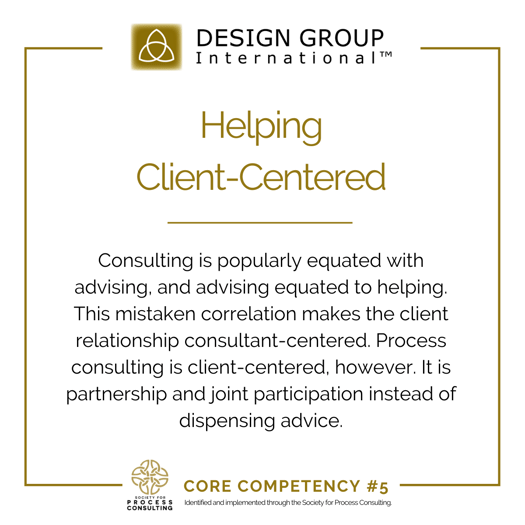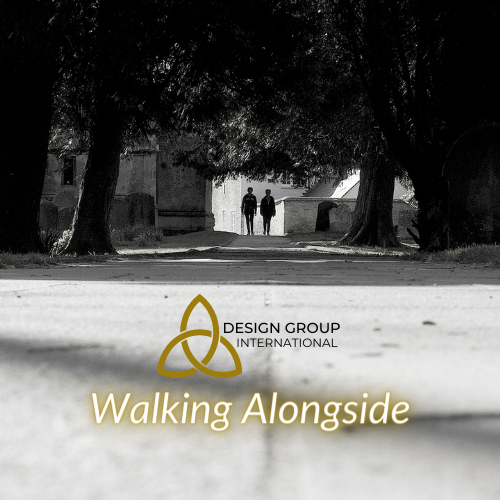
The key to client-centered helping
Can you remember a time when someone was trying to be helpful to you, but it ended up being anything but? Often in our eagerness to help someone we perceive as in “need”, we rush to provide help as quickly as possible.
In their popular book, When Helping Hurts, Corbett and Fikkert describe the challenge of wealthy churches making efforts to “help the poor” through material things without stopping and asking what would be helpful in their communities. The reality of “helping” becoming “hurting” is not solely reserved for churches. When we center our perspective as the “helper” instead of centering on the Client and their perspective, “hurt” can often be an unintended consequence.
As a Process Consultant, it is important to approach helping with a client-centered approach. This first component of healthy helping prioritizes the experiences, needs, and perspectives of the one receiving the help, the Client.

3 important steps to ensure your “helping” is client-centered:
1. Ask before you Act – would this be helpful?
As shared before, listening is a trustworthy approach that gives us a good chance to provide help that is meaningful and aligned with the person receiving the help! As we learn to listen actively and comprehensively, our curiosity grows and we gain a deeper understanding of someone we seek to help.
2. Trust the validity of their perspectives – believe them!
My dear professor in graduate school was Dr. Edward “Chip” Anderson, one of the founders of the modern “Strengths Movement." In my time with Chip, he would often share passionately about this important concept. “You must trust the validity of someone’s experience”. When someone tells you their perspective, receive it as a sacred gift! That person has entrusted you with how they see the world. What a beautiful thing!
In that moment, you have a choice. Believe them or dismiss them. When we move toward client-centered help, we choose to believe their perspective is valid and true! In this way, we can honor them and adapt our “help” to align with their need or deep hope.
3. Own your Impact AND Intent – take responsibility when it doesn’t work.
Perhaps this one is the most difficult. What happens when our help doesn’t work out the way we intended?
What is intended when we seek to help is not guaranteed to be our impact. I intend to offer love and support by giving my partner ice cream, but the impact may be an upset stomach due to their lactose intolerance.
As we consider how we “help,” it is important to center the needs, perspectives, and experiences of the other. In this way, we have an opportunity to align our intent AND our impact.
Client-centered helping puts the needs and perspectives of the client ahead of our own needs and perspective. When we ask before we act, trust the validity of others’ perspectives, and own both our intent and impact, we move closer to aligning our intent to make a difference with an impact on thriving leaders and organizations.
May your help be centered on those receiving it,

/Matt%20Visser.png?width=86&name=Matt%20Visser.png) Matt Visser
Matt Visser
Design Group International
Senior Consultant
The core competencies of process consulting have been developed and are taught by the Society for Process Consulting. If you are interested in receiving your credential in process consulting please visit our website.
Photo by Claudio Schwarz on Unsplash
Tags:
process consulting, Design Group International, listening, helping, learning, Walking Alongside Blog/Matt%20Visser%20Headshot%20(300x300).png)
May 11, 2022

Comments